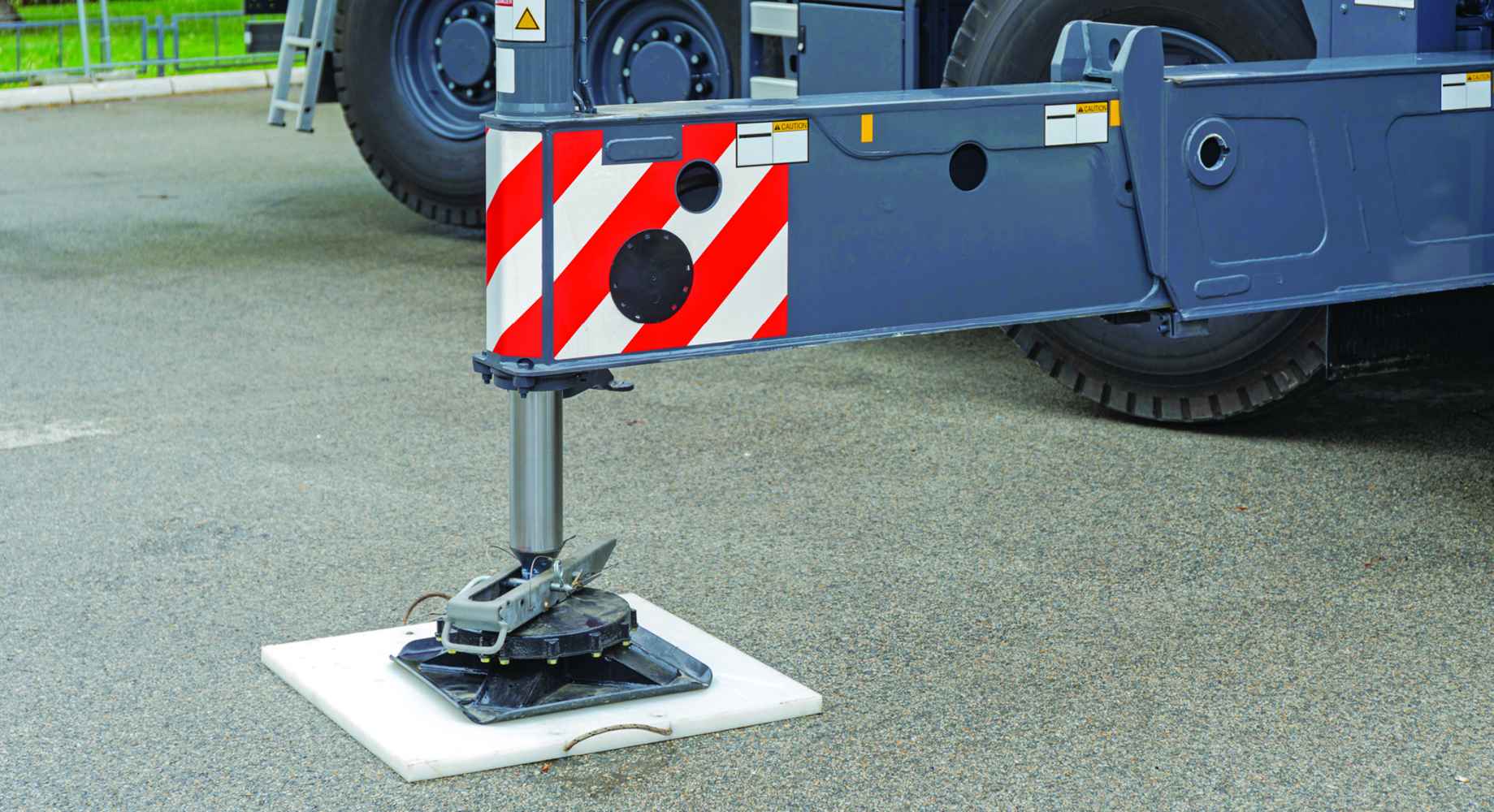
Choosing the right outrigger pads provides much needed stability for vehicles and equipment on any construction site, and helps ensure a safer work environment for operators and crews. Not all pads are alike, however, and there are several factors to consider when making effective choices.
“Fleet operations need to consider a number of variables when specifying what type of outrigger pads to use,” said Eric Steiner, marketing director, Bigfoot Construction Equipment, Inc. “Information on ground conditions, the type of machinery being used, climates and materials are all important factors.”
Ground Conditions Are the Most Important Factor
“Knowing the exact ground bearing capacity (GBC), which is the amount that ground can hold before collapsing, or the approximate GBC based on the soil type, is crucial,” Steiner related. “For example, equipment set up on concrete will affect the ground much differently than on undeveloped soil. Even though the same vehicle is being used, different padding will be required to meet the necessary broadcasting of weight to prevent the outriggers from sinking into the ground and causing equipment failure.
“Ground conditions will signal if you need a larger pad or additional padding, cribbing or blocking,” Steiner added. “But simply increasing the length and width of a pad will not always be the answer. You may also have to make the pad thicker to prevent deflection caused by having too much concentrated weight, especially on ground with a low GBC.”

The Type of Machinery Being Used May Require Certain Outrigger Pads
With utility vehicles, outriggers experience more vibration and shifting, so a pad that is built to counter that will be a better choice, Steiner noted. For example, a pad with beveled edges will stop the outrigger from going over the edge of the pad by moving with the outrigger as it shifts.
Additionally, in operations that require moving equipment on jobsites, picking up and putting down the outrigger pads impacts efficiency. In those cases, slide pads, which stay attached to the outriggers when they are lifted and the machine is being moved, can be a good choice.
“However, there is not a one-size fits all pad so knowing the dimensions of the outrigger is crucial for getting the correct padding for the machine,” Steiner said. “This applies to all different types of equipment, including bucket trucks, boom trucks, aerial work platforms, cranes, spider lifts or any other outrigger equipped machinery.”
Each Type of Outrigger Pad Material Has Its Pros and Cons
Some jobs require simple outrigger solutions while others require problem solving, Steiner noted. “When it comes to materials, wood pads are more rigid so they will not deflect, but they can break if overloaded,” he explained. “Composite pads have a natural deflection, which prevents them from cracking or breaking, and if there is any deflection, the pad can be flipped to the other side.
“Where the ground conditions are exceptionally poor, using a combination of wood and composite pads will provide the safest setup,” Steiner continued. “Using a wood pad on top of a composite pad allows the weight to be broadcast to a wider area of the composite pad, preventing deflection and providing a wider footprint for the outrigger.”
Different Climates Can Present Different Challenges
In typical applications, wood pads last up to 10 years, but if the outrigger pad is being used in a dry climate, it can last much longer, Steiner advised. If you’re in climates that can be rainy one day and then humid and muddy the next, composite pads will be a better option because they are more resistant to the elements.
Additionally, working in snow and icy conditions presents its own challenges, such as the pads not getting friction on the ground so a pad with the proper surface to deal with that environment is required, Steiner added.

Ensuring Long Outrigger Pad Service Life
Best practices to ensure long service life of outrigger pads include proper storage, handles and features, and informed setup, Steiner related. “Proper storage is especially important for wood pads,” he said. “Leaving them outside makes them vulnerable to the elements, shortening their lifespan. Additionally, if a heavy pad is required for a specific job where there are exceptionally poor soil conditions, heavy-duty handles are crucial.
“Spanning gaps with an outrigger pad is a common error,” Steiner added. “Outrigger pads are meant to protect the ground, not become the ground for a job.”